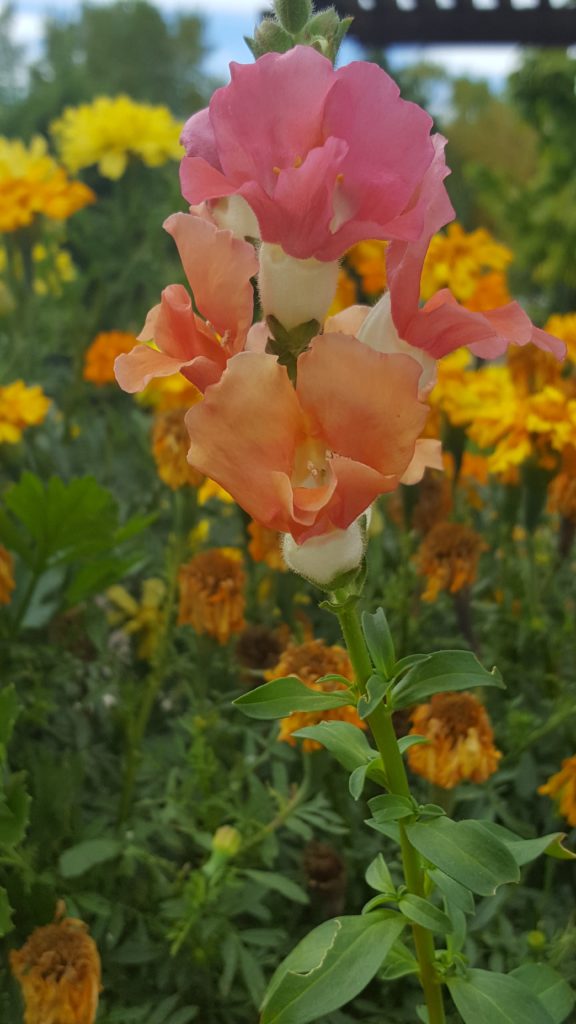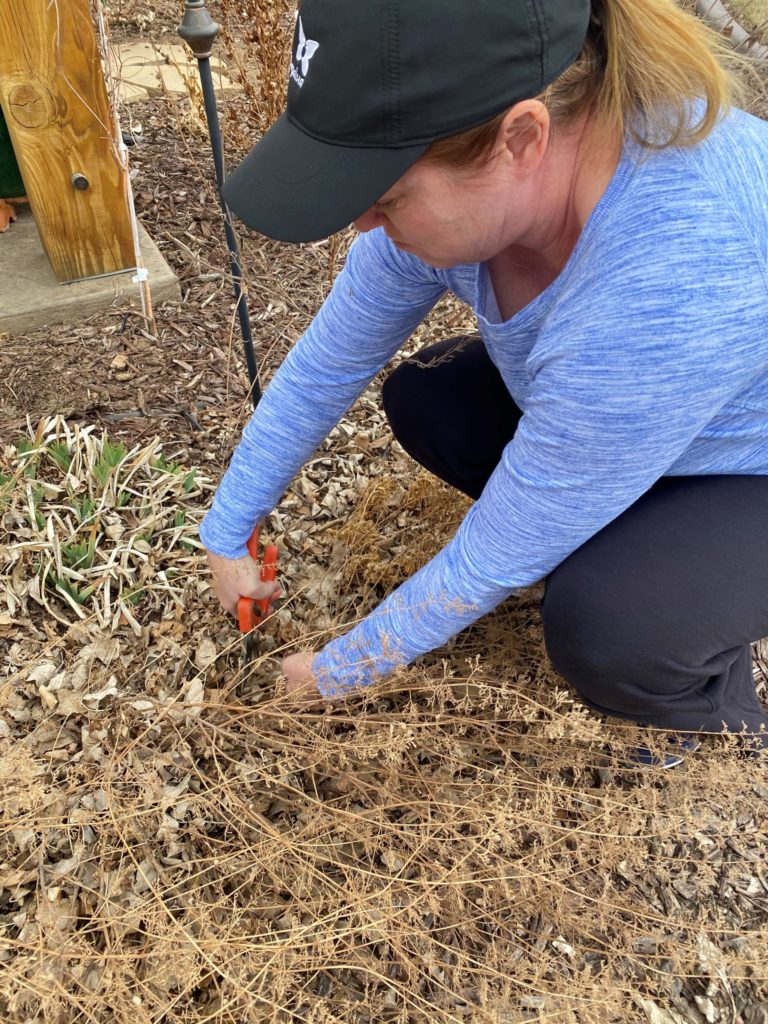
by The Gardens on Spring Creek Horticulture Team
As we enter another week of social distancing amid the COVID-19 pandemic, we encourage individuals to safely spend time outdoors. Gardening has many mental health benefits and can be a great way to stay active while helping to flatten the curve.
Wondering what you should be doing in your yard or garden in the upcoming weeks? We made you a list!
If you have supplies already on hand, now is a great time for any hardscaping projects you’ve been planning. Add depth and dimension to your garden space with rocks, stones or pylons now that the ground has thawed.
This is also a great time to mulch, if you haven’t already. Wood mulch helps retain moisture, suppresses weeds, increases soil organic matter and can help add nutrients to the soil. Feel free to spread it to a depth of two to four inches, depending on your soil texture, taking care not to cover plant crowns which can lead to rot. Fine-textured soils (like clay) require less mulch, while coarse-textured soils, like sand, do best with more.
There is also plenty you can do with supplies that you may already have on hand –
- Love Your Perennials: Herbaceous perennials are those that die all the way to the ground in the winter and then grow new foliage, stems and blossoms each year from the same root system. Cut back old growth to make way for the new but hold off on dividing your perennials.
Most perennials are best divided right after they bloom. During the spring, plants are mustering their energy to bud and bloom, so waiting until this period has passed to add the additional stress of dividing will help them flourish.
Waiting until after they bloom to divide can also help you determine which perennials need to be split. Most perennials will perform better if they are divided every three years or so, and you’ll often see a donut effect with vigorous growth around the edges but poor performance in the center of the plant when they are overdue for division. Avoid dividing overgrown grasses until they are actively growing later in spring, but before they begin producing flowers mid-late season.
- Prune: In contrast to herbaceous perennials, woody plants like shrubs produce stems that last multiple seasons. To care for these varieties, follow the three D’s of pruning – first cut any dead, diseased or damaged wood before doing any structural pruning. Then prune branches that cross or rub, or those with poor structure. Aim for even distribution of healthy stems of different ages across the plant.
When pruning, pass up spring-flowering shrubs and opt to prune those that won’t bloom until later in the year, so you don’t sacrifice your spring flower display. Consider cutting about a third of the branches off your shrubs a few inches from the base with a sharp pruning saw. Cut the oldest and largest branches to encourage vigor and thin excessive young growth.
- Pull Those Weeds: Weeding is no one’s favorite garden activity, but weeding now can save you time and energy down the line. Early spring weeding helps prevent weed seeds from entering the soil and producing a second crop of weeds later in the year.
- Watch It Grow: If you prefer to grow your garden from seed, many vegetables, and annual flowers can be started indoors now. This can also be a great way to engage your kids in your love for gardening.
Hardy annuals, such as pot marigold (Calendula officinalis), larkspur (Delphinium occidentale), Shirley poppies (Papaver rhoeas) and snapdragons (Antirrhinum spp.) can be sown from seed directly into your garden at this time as well. Just be sure to water them often – out of sight; out of mind.

- On Edge: While we’re all a little on edge during this challenging time, cleaning up the edges of your landscape can make a dramatic difference quickly. Use a spade to separate grass from your flower beds and create a clear delineation. For stubborn grass, you can add plastic or metal edging to prevent overgrowth.
Whatever you decide to do in your garden, enjoy nature and breathe deeply. Remember that “to plant a garden is to believe in tomorrow.” – Audrey Hepburn
Support Northern Colorado Journalism
Show your support for North Forty News by helping us produce more content. It's a kind and simple gesture that will help us continue to bring more content to you.
BONUS - Donors get a link in their receipt to sign up for our once-per-week instant text messaging alert. Get your e-copy of North Forty News the moment it is released!
Click to Donate

